Marine Corps, United States, is a branch of the U.S. armed forces that is especially trained and organized for military expeditions and amphibious operations. Marine assault forces, supported by air units and U.S. Navy warships, attack and seize enemy positions. As a “force in readiness,” the Marines go to strategic areas as crisis reaction forces. Other missions may involve combat, peacekeeping, counterterrorism, civilian evacuations, or humanitarian assistance. The Marines serve and train for war in every climate, from the polar regions to the deserts and the tropics. They are often called leathernecks because in the early days they wore high leather collars around their necks.
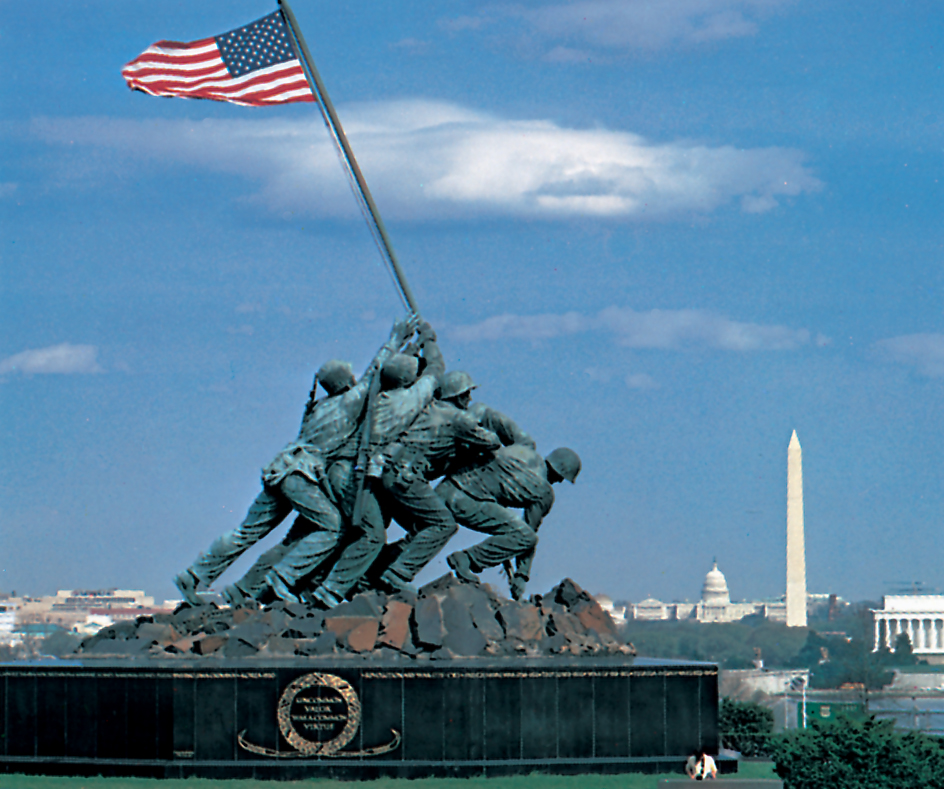

A well-known military saying is “The Marines have landed, and the situation is well in hand.” The Marines have been the first to fight in almost every major war of the United States. Since 1775, these “soldiers of the sea” have grown from two battalions of sharpshooters into an elite combat organization of Marine Expeditionary Forces composed of air wings, ground divisions, and logistics (supply) groups.
The U.S. Marine Corps is one of the two naval services within the Department of the Navy in the Department of Defense. The corps is a partner, but not a part, of the Navy. Navy amphibious ships transport Marine troops on missions. The Marine Corps has a strength of about 180,000 men and women on active duty and 35,000 in the reserves.
The motto of the corps, adopted in 1880, is Semper Fidelis (Always Faithful). The Marine emblem was adopted in 1868. “The Marines’ Hymn,” written in the 1800’s, begins with the stirring words “From the halls of Montezuma to the shores of Tripoli.” John Philip Sousa wrote the corps’ march, “Semper Fidelis,” while serving as leader of the Marine band. The band is called “The President’s Own,” because it plays for state affairs in the White House. The official colors of the corps are scarlet and gold.
The purpose of the Marine Corps
Every great maritime nation must be able to defend its interests on land and sea, and protect the lives and property of its citizens. The U.S. Marine Corps maintains Fleet Marine Forces of combined air and ground units to seize and defend advance bases, and for land operations that are carried out as part of a naval campaign. It develops the tactics, techniques, and equipment for amphibious landing operations. The corps provides detachments for service aboard warships and for the protection of naval bases and stations. It guards U.S. embassies, legations, and consulates in other countries. The corps also guards the White House, the presidential retreat at Camp David, and the U.S. Naval Academy. Marine Fleet Antiterrorism Security Teams and a Chemical Biological Incident Response Force stand ready to go to any part of the world. The Marine Corps also performs other duties as directed by the president.

Life in the Marine Corps
Training a Marine.
Marine recruits receive basic training in boot camp. Recruits are called boots because in early days they wore leather leggings that looked like boots. Marine recruits receive about 12 weeks of basic training. They undergo physical conditioning and learn to shoot, drill, obey orders, and follow the traditions of the corps. Men train at one of two recruit depots—in Parris Island, South Carolina, or in San Diego. Women train at Parris Island.
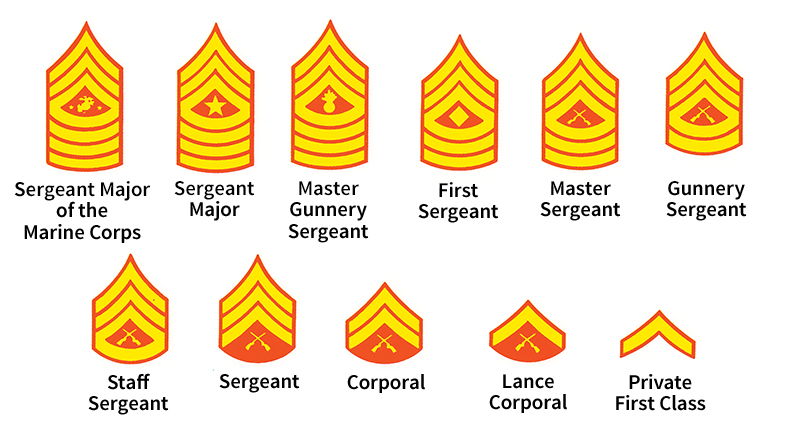
Training an officer.
Marine Corps officers come from four main sources: (1) the U.S. Naval Academy, (2) the Naval Reserve Officers Training Corps, (3) civilian universities, and (4) the enlisted ranks of the corps. Each officer receives six months of initial training at the Marine Corps Basic School in Quantico, Virginia. Much of this training covers field tactics, leadership, marksmanship, infantry weapons and supporting arms, drill, military law, and physical fitness.
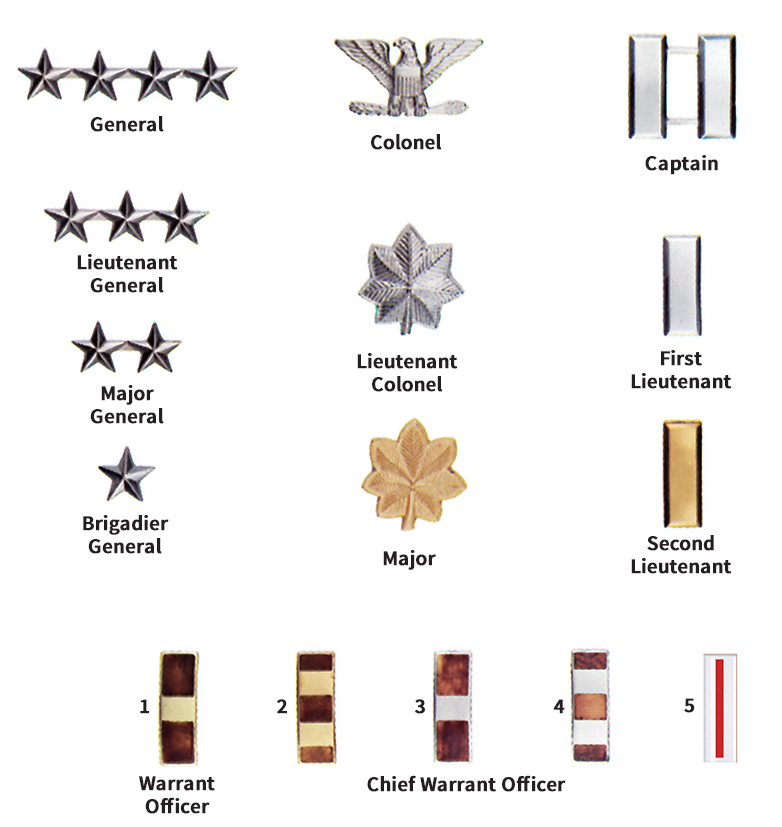
A typical day.
Because of the wide variety of Marine duties, there is no completely typical day. A normal day for garrisoned Marines—that is, Marines at a base—involves training, maintenance, and administrative duties. The normal garrison routine starts with early morning exercises called physical training. After showering and changing into the appropriate uniform, the Marines begin their daily work. At noon, they break for lunch. In the late afternoon, when the work is finished, the Marines assemble into formation and receive a briefing on the next day’s missions. They are then secured (released) for liberty (free time) and have the evening to themselves.
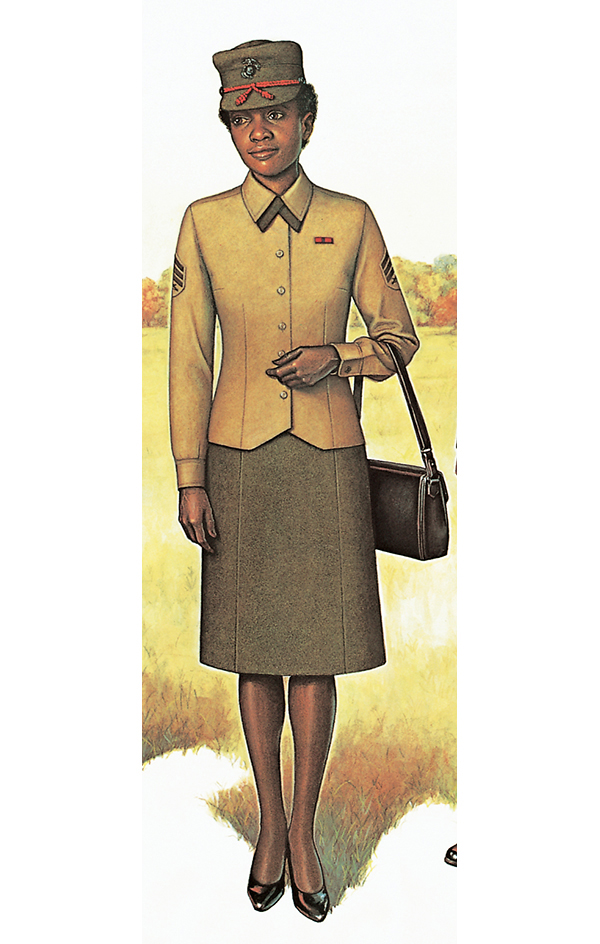
Careers in the Marine Corps.
Young men and women from the ages of 17 to 28 may enlist in the corps for three, four, or six years. They may serve in a wide variety of job fields. In 2013, the Defense Department announced that women would be able to serve in direct combat roles, reversing a 1994 official ban.
Marines who reenlist may, if qualified, rise to jobs as senior noncommissioned officers. The most capable Marines can win appointments to the U.S. Naval Academy, receive direct commissions as officers, or be chosen as warrant officers. Marines may retire with pay after 20 years’ service.
Weapons and equipment
Marine ground weapons.
The M16A2 rifle is the basic infantry weapon of the corps. The Marines also use grenades, pistols, and machine guns.
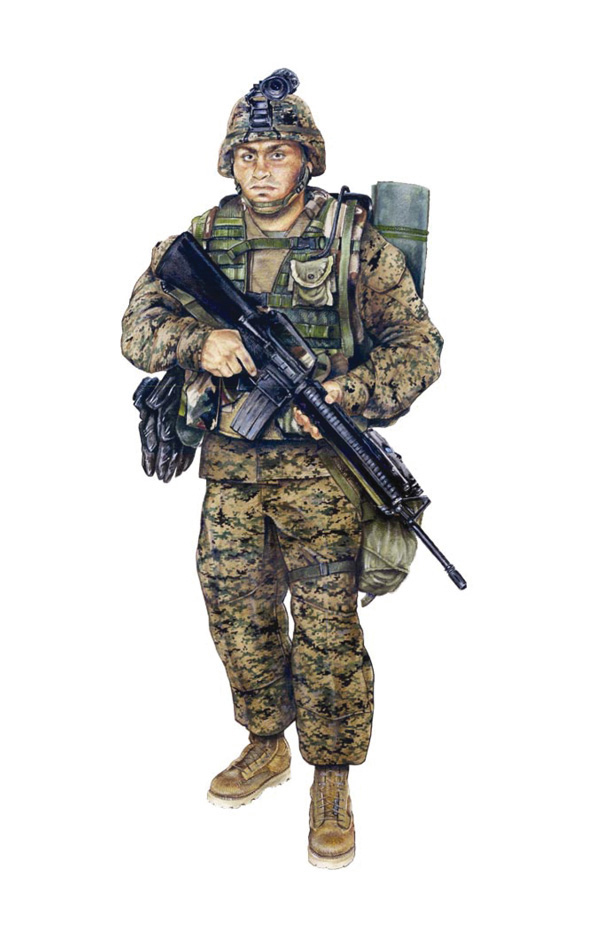
Artillery provides support for Marine infantry. Marine artillery includes mortars, guns, and howitzers. Armored units have tanks with heavy guns. Antiaircraft weapons include Hawk guided missiles and shoulder-fired Redeye and Stinger missiles. Special Marine teams ashore use radio to direct gunfire from warships.
Marine aviation
provides close air support for Fleet Marine Forces and other troops. It reinforces naval aviation. Marine aviation attacks enemy forces so close to Marine land operations that detailed coordination between air and ground units is required. The Marines have aviators with ground units at the front lines to control and direct air support. They fly the same kinds of aircraft as the Navy (see Navy, United States (Naval aviation)). The Marines also fly the Harrier, a type of V/STOL (Vertical/Short Take-Off and Landing) aircraft. In addition, the Marines operate assault helicopters to land men from naval helicopter carriers.
Organization of the Marine Corps
Headquarters
of the Marine Corps is in Washington, D.C. A commandant, appointed by the U.S. president, heads the corps. The commandant usually serves four years and has the rank of general. The commandant serves on the Joint Chiefs of Staff and reports directly to the secretary of the Navy. The commandant’s principal assistants include the assistant commandant and chief of staff, the deputy and assistant chiefs of staff, and the directors of headquarters departments and divisions.
Operating forces
account for almost two-thirds of the entire Marine Corps. They consist of (1) the Fleet Marine Forces, (2) Marines aboard ships, and (3) security forces. The Fleet Marine Forces make up the corps’s combat strength and form parts of naval fleets. They consist of three Marine divisions, three Marine aircraft wings, and various support units. The combat units operate as air-ground teams. One division and wing team is based on the East Coast of the United States, another is on the West Coast, and the third is in the Far East and Hawaii. The teams remain combat ready at all times. A fourth division and wing team, composed of elements of the Marine Corps Reserve, stands ready to reinforce the active forces when needed.
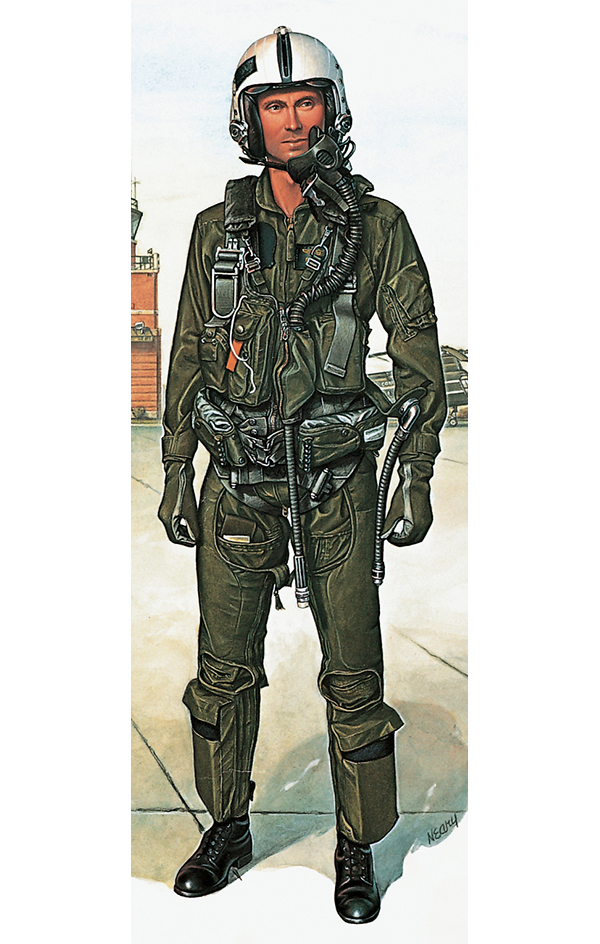
Marines serve on many warships. They provide internal security aboard the vessels. They also take part in amphibious warfare and land operations in connection with naval campaigns. Marine airplane and helicopter squadrons may fly from carriers.
Security forces include Marines who guard American embassies and other important government installations and naval bases around the world.
The supporting establishment
provides administrative, supply, training, and recruiting support for the operating forces. The Marine schools combine the corps’s education and military development activities. The corps’s two recruit depots handle basic training. The Marine logistics bases provide support.
Reserves.
The Marine Corps Reserve consists of (1) the Ready Reserve, (2) the Standby Reserve, and (3) the Retired Reserve. Many members of the Ready Reserve enlist for six years to serve in selected reserve units. They train one weekend a month and serve two weeks of active duty each year. Other members of the Ready Reserve may volunteer to train with these reserve units, or they may take other types of training.
The Standby Reserve is for Marines who complete their military obligation and remain in the reserves. They do not undergo the scheduled training required of the Ready Reserve. The Retired Reserve is made up of reserve Marines who have been active in training for 20 years or more. There are about 110,000 Marines in the reserves, and all of them may be called to active duty, depending on the situation.
History
The early Marine Corps.
The Continental Congress established a Marine corps on Nov. 10, 1775, to fight in the Revolutionary War in America. Marines also served with the Continental Army in the battles of Trenton, Assunpink, Morristown, and Brandywine. After the war, no corps as such existed. The U.S. Congress re-created the Marine Corps as a military service in 1798. Marines fought many naval battles with France from 1798 to 1801.
The 1800’s.
In 1805, the Marines led the storming of a Barbary States’ stronghold at Derna, Tripoli (now part of Libya), helping end raids on ships in the Mediterranean Sea. The War of 1812 saw the Marines in all major American naval victories. Captain John Gamble showed such ability that he was given command of a captured British warship. He became the only Marine officer ever to command a naval ship. The Marines helped Andrew Jackson’s army administer the worst defeat of the war to the British in the defense of New Orleans in 1815.
During the Mexican War, from 1846 to 1848, the Marines made many landings on both coasts of Mexico. The Marines entered the city gates of Mexico City. They raised the American flag over the National Palace, which later became known as “the halls of Montezuma.”
When the American abolitionist John Brown and his followers captured the army arsenal at Harpers Ferry, Virginia, in 1859, Marines from Washington were the only troops available. They helped capture Brown and occupied the arsenal. In the American Civil War (1861-1865), the Marines fought in many land and naval battles.
During the late 1800’s and early 1900’s, the Marines landed 17 times in China to protect U.S. interests. They defended the besieged legations in Beijing during the Boxer Rebellion in 1900, and also fought at Tianjin in the Beijing relief force.
During the Spanish-American War, Marines were the first American troops to land in Cuba. A battalion seized Guantánamo Bay in 1898. Marines were also the first American forces to land in the Philippines. They occupied Guam and took part in the seizure of Puerto Rico. A Marine brigade served with the Army during the Philippine-American War (1899-1902).
The 1900’s.
The Marines landed in Panama six times from 1885 to 1903 to protect American lives and property and to keep the Isthmus of Panama open. They also fought in two campaigns to stabilize Nicaragua, in 1912 and again from 1926 to 1933. Marine brigades occupied Haiti from 1915 to 1934 and the Dominican Republic from 1916 to 1924 to quiet political unrest there.
During World War I, the Marines arrived in France in June 1917 with the first troops of the American Expeditionary Forces. They dismayed the Germans with long-range rifle fire and fierce assaults at Soissons, St.-Mihiel, Blanc Mont Ridge, and the Meuse-Argonne.
In August 1942, the Marines invaded Guadalcanal in the Solomon Islands and launched the first American offensive of World War II. Marines under Lieutenant General Holland M. Smith led the amphibious landings of an island-hopping drive westward through the Central Pacific. The conquest of the Pacific island of Iwo Jima during February and March of 1945 was the largest all-Marine battle in history. The strength of the corps reached nearly 500,000 during World War II.
In August 1950, the Marines entered the Korean War, arriving in Korea to help rescue the crumbling Busan (also spelled Pusan) perimeter. They later made an amphibious landing at Incheon (also called Inchon). After Chinese Communist troops entered the Korean War, the Marines smashed seven enemy divisions in their winter march south from the Jangjin (also called Chosin or Changjin) Reservoir.
During the Suez crisis in 1956, a Marine battalion aided the evacuation of U.S. citizens from the trouble zone. In 1958, a Marine regiment helped prevent the overthrow of the Lebanese government. Marine units ended fighting in the Dominican Republic in 1965. From 1965 to 1973, about 450,000 Marines served in the Vietnam War.
Recent Marine operations.
From 1982 to 1984, several Marine units formed part of an international force attempting to preserve order in Lebanon, which was torn by civil war between Lebanese Christians and Lebanese Muslims and their allies in the Palestine Liberation Organization (PLO). In 1983, the Marines helped defeat rebel forces that had seized the government of Grenada. About 94,000 Marines served in the Persian Gulf War of 1991. During the 1990’s, the Marines participated in NATO (North Atlantic Treaty Organization) operations in Bosnia-Herzegovina and Serbia. Beginning in 2001, Marines fought against the Taliban in Afghanistan. They also served in Iraq, fighting in the initial invasion in 2003 and fighting against militants in the turmoil following the invasion.
Marines also serve in what are called military operations other than war, abbreviated MOOTW. These operations include humanitarian missions, such as one in 1992 to facilitate the distribution of food in famine-stricken Somalia against the opposition of military warlords. MOOTW also include the evacuation of civilians threatened by civil strife in their countries, such as operations in Rwanda in 1994 and Sierra Leone in 1997.
